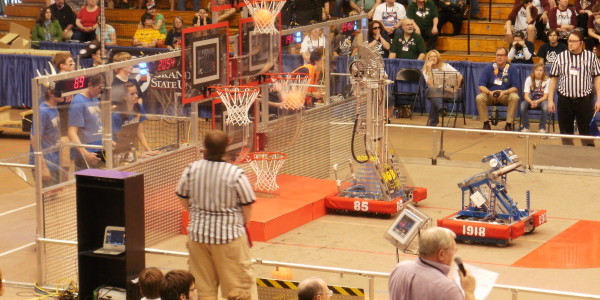When it comes to military prowess and Olympic basketball teams, few countries can compare to the United States; however, performance in math and science is quite a different story. A survey released earlier this year from the Pew Research Center reported that less than 30% of Americans rate U.S. K-12 science and math education above average or better when compared to the rest of the world. Those 30% of people are right because the United States actually ranks remarkably average in math and science test scores. We’re right there with Slovakia and Lithuania.
Robotics and automation are essential for a country’s success in the future, and an increased interest in math and science will keep the United States in step with the rest of the world. Manufacturing is necessary for a strong U.S. economy, and robotics will help advance and improve the capabilities of industrial automation. According to the Manufacturing Institute, every dollar spent in manufacturing adds $1.37 to the U.S. economy, and every 100 jobs in manufacturing creates 250 jobs in other fields.
It’s clear that manufacturing is important, but will we be able to employ enough skilled workers? There’s a skills gap in the United States, and the pool for employable workers with backgrounds in math and science is pretty shallow. According to a report from Deloitte, there will be 3.4 million skilled manufacturing jobs available in the next decade, but only 1.4 million workers with the qualifications to do the work.
Many American students are not receiving the necessary education in math and science, or they’re not showing enough interest in those subjects, to keep up with the rest of the world. University engineering courses can be too advanced for students with public school educations in math and science. This means that U.S. employers will either have to look to other nations for workers, or we will start to lag behind.
There’s been a big push in robotics, to try and close this skill gap. The White House has increased funding in robotics, and an increasing number of schools, programs, and classes are geared towards teaching math and science to students through the study of robotics.
There are schools dedicated to teaching robotics. There are also summer camps designed to teach young students about robotics. In addition, more schools are starting robotics programs.
The traditional approach to teaching math and science doesn’t seem exciting or appealing to many students. Using robots to teach students about math and science is a much more interesting approach. Who doesn’t love robots? Robotics programs could inspire young students to become roboticists, engineers, programmers, or scientists.
